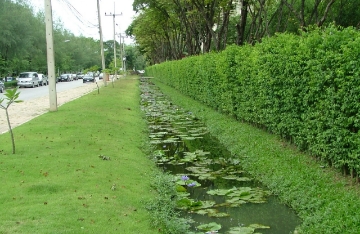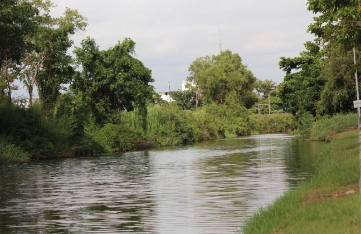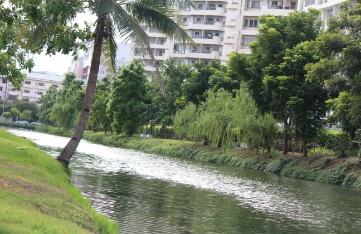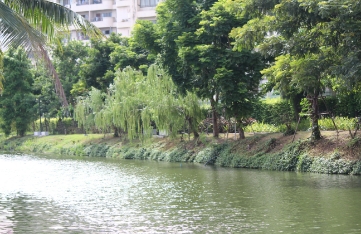Surface Water Management
Mahidol University, Salaya, has an efficient surface water management system, consisting of rainwater and treated recycled water from
the university’s wastewater treatment system. This system addresses issues of flooding and water shortages during the dry season.
Surface water collected in canals and reservoirs is utilized to irrigate plants across the university, reducing excessive water usage
and ensuring sufficient water supply in the dry season. The university also focuses on planting native and drought-resistant species to
reduce water consumption and simplify maintenance.
The natural landscape of Mahidol University, Salaya is a floodplain area as it is located on
former rice fields and water lily ponds. In 1974 (B.E. 2517), the surface water system was
built after the university obtained the land. The first and the second university master
plans, 1974 and 1997 respectively, have laid out the main canal system, which includes a
large canal that runs both inside and around the university. Minor water drainage systems
were installed in a connected, comprehensive and effective manner throughout the campus.
The university campus development has greatly altered the canal system, especially solving
the problem of wastewater. A large drainage system was installed near the petanque court,
while more ditches were dug in the south of the commercial area in order to connect them
with the main system, resulting in a more systematic and connective water flow. The main
former ditches were dredged for better drainage and reduced water spoilage. There were newly
installed drainage systems and pump sub-station near the Faculty of Engineering area to
alleviate floods during the rainy season. The university’s center of wastewater treatment
system was built to gather and treat wastewater before releasing it out to canals
which reduces wastewater in canals and in return creates a nicer environment.
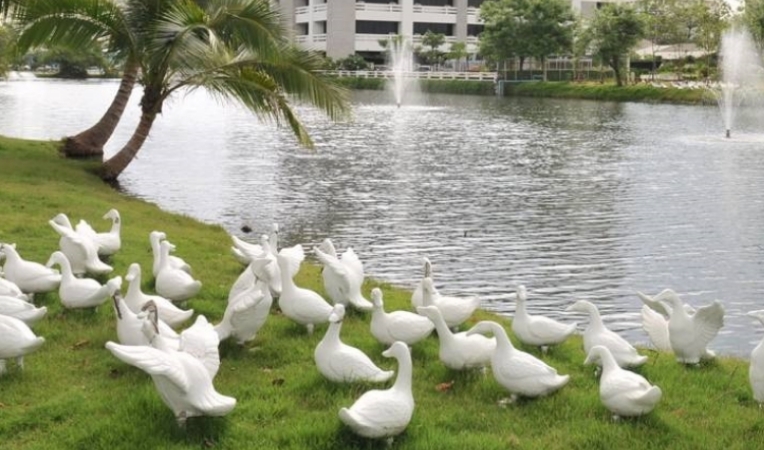
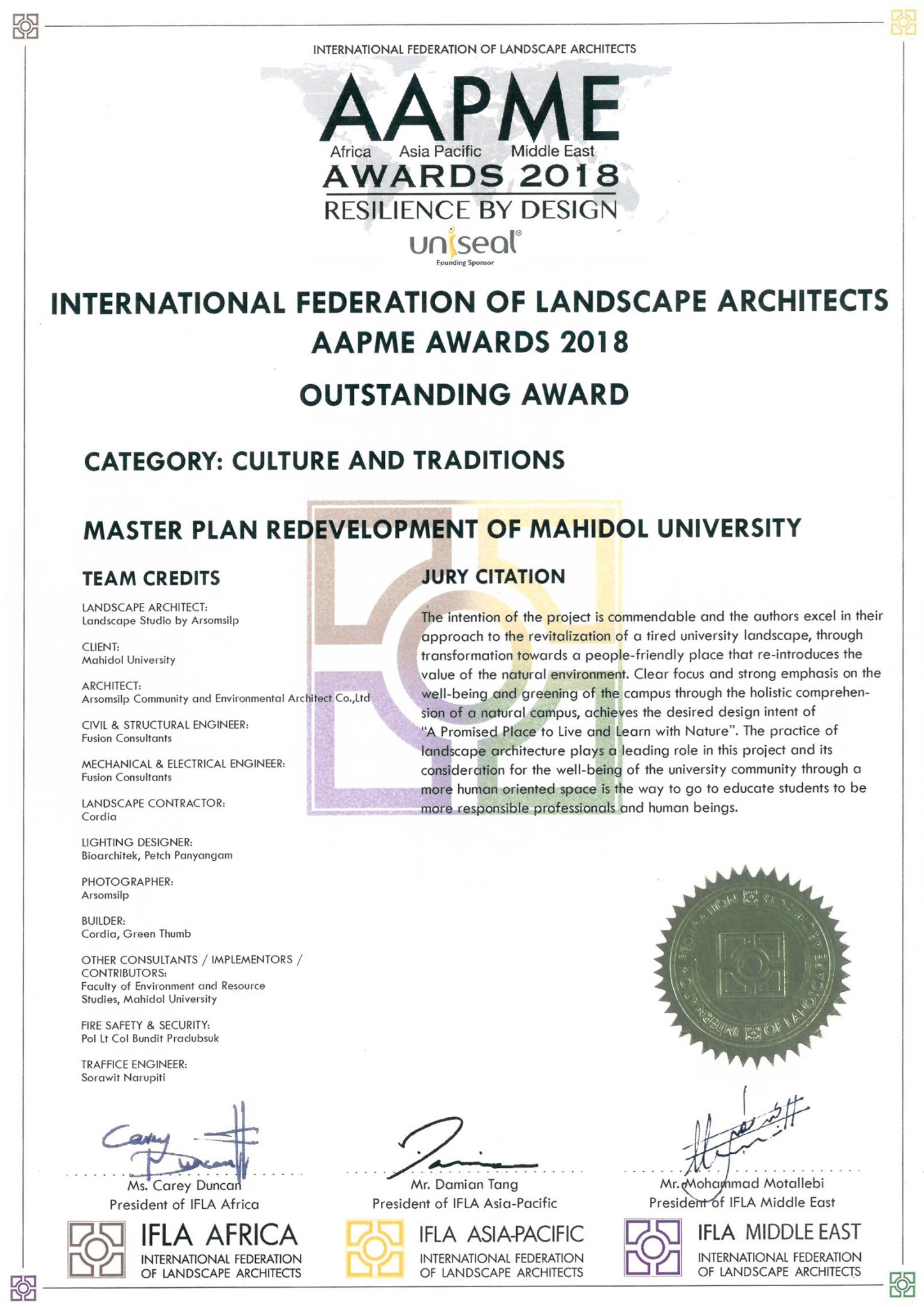
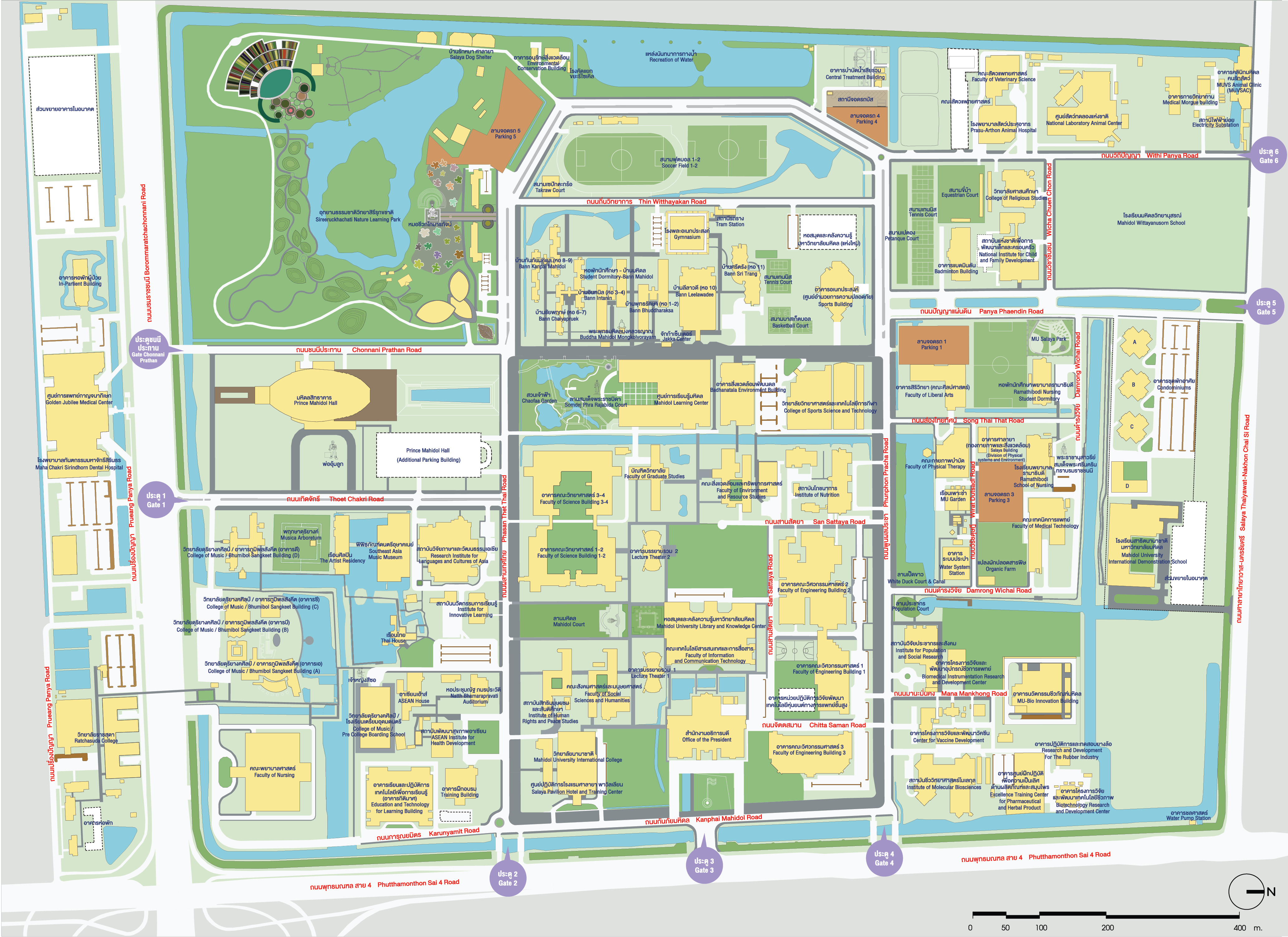
The University Master Plan 2008 is a master plan for enhancing space utilization that
prioritizes people's and the environment's well-being. This master plan was awarded an
IFLA AAPME Awards 2020 (International Federation of Landscape Architects Africa Asia Pacific Middle East),
a worldwide prize for landscape architecture design that
acknowledges the impact of a rapidly changing environment as well as species of plants
are suited and resistant to climate conditions were identified which minimized the
amount of water needed for watering.
In terms of rainwater and surface water system management, Mahidol University, Salaya
applies large reservoirs, ponds, drainage ditches, open gutter systems, and sewage systems
that are installed around the campus, and linked to the main canals. This system gathers
rainwater and surface water to two pumping stations; water pumping station 1 located on the
northeast corner, and water pumping station 2 located on the southwest of the campus. Both
stations also help keep water at the required level to maintain nice scenery of the canal
banks and ponds which also helps to reduce the water levels in the wet seasons, thus
preventing and alleviating flood. The university also set up a watering system that pumps
water from canals, ditches, and treated water centers to water all of the plants on the
campus.


The surface water management of Mahidol University mainly aims to prevent floods and manage
water usage within the area. Moreover, it is a way to preserve natural wetlands and
beautiful scenery, to use them as recreational sites. This type of development promotes and
encourages the achievement of the sixth Sustainable Development Goal (SDG6): Clean Water and
Sanitation, and SDG15: Life on Land.

